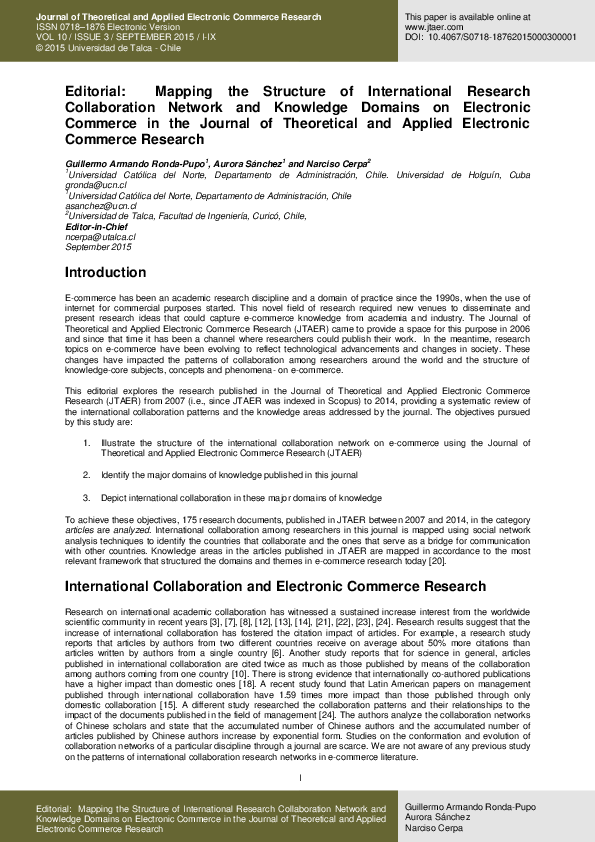无人机-骑手联合配送模式下外卖配送的订单分配与路由优化
IF 5.1
3区 管理学
Q1 BUSINESS
Journal of Theoretical and Applied Electronic Commerce Research
Pub Date : 2024-04-03
DOI:10.3390/jtaer19020041
引用次数: 1
摘要
外卖配送的订单分配和路由优化是电子商务领域一个具有挑战性的研究课题。本文针对外卖配送过程中存在的服务范围有限、配送方式不合理、配送成本高、时间窗口紧张等问题,提出了一种多配送中心协同的无人机-骑手联合配送模式。以最小配送成本和整体最大客户满意度为目标函数构建了模型,并设计了两阶段启发式算法来求解该模型。在第一阶段,利用欧氏距离将客户划分为属于不同配送中心的区域,并采用亲和传播(AP)聚类算法分配来自不同配送中心的订单。第二阶段使用改进的塔布搜索算法,在指定骑手和无人机呼叫次数的基础上进行路线优化。本文以中国的 Ele.me 和美团外卖为参考对象,使用所罗门数据集进行研究。实验结果表明,与传统的骑手配送模式相比,多配送中心协同的无人机-骑手联合配送模式能有效减少骑手使用次数,降低配送成本,提高整体客户满意度。本文章由计算机程序翻译,如有差异,请以英文原文为准。
Order Distribution and Routing Optimization for Takeout Delivery under Drone–Rider Joint Delivery Mode
Order distribution and routing optimization of takeout delivery is a challenging research topic in the field of e-commerce. In this paper, we propose a drone–rider joint delivery mode with multi-distribution center collaboration for the problems of limited-service range, unreasonable distribution, high delivery cost, and tight time windows in the takeout delivery process. The model is constructed with the minimum delivery cost and the overall maximum customer satisfaction as the objective function, and a two-stage heuristic algorithm is designed to solve the model. In the first stage, Euclidean distance is used to classify customers into the regions belonging to different distribution centers, and the affinity propagation (AP) clustering algorithm is applied to allocate orders from different distribution centers. The second stage uses an improved tabu search algorithm for route optimization based on specifying the number of rider and drone calls. This paper takes China’s Ele.me and Meituan takeout as the reference object and uses the Solomon data set for research. The experimental results show that compared with the traditional rider delivery mode, the drone–rider joint delivery mode with multiple distribution center collaboration can effectively reduce the number of riders used, lower the delivery cost, and improve the overall customer satisfaction.
求助全文
通过发布文献求助,成功后即可免费获取论文全文。
去求助
来源期刊
CiteScore
9.50
自引率
3.60%
发文量
67
期刊介绍:
The Journal of Theoretical and Applied Electronic Commerce Research (JTAER) has been created to allow researchers, academicians and other professionals an agile and flexible channel of communication in which to share and debate new ideas and emerging technologies concerned with this rapidly evolving field. Business practices, social, cultural and legal concerns, personal privacy and security, communications technologies, mobile connectivity are among the important elements of electronic commerce and are becoming ever more relevant in everyday life. JTAER will assist in extending and improving the use of electronic commerce for the benefit of our society.

 求助内容:
求助内容: 应助结果提醒方式:
应助结果提醒方式:


